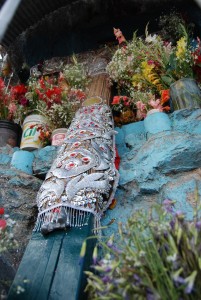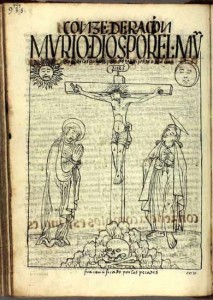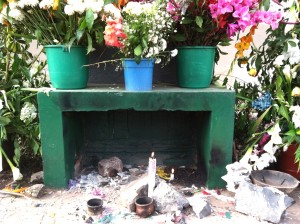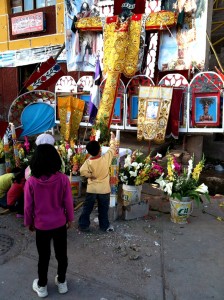Cruz Velakuy, Cuzco’s Feast of the Cross

As a city, Cuzco is very alive. Although some days are more intense than others, throughout the year it has celebrations that mobilize its people and fill it with color and vitality. This week, Cuzco honored its crosses, they all appeared well dressed and decorated in a feast that surprises many outsiders and yet is something that shows the rich core of meaning and history in this city that has so many layers.
The Feast of the Cross claimed many people in the Andes not long after the conquest. It continues to be important though in the official Catholic calendar its proper date is in September. Nevertheless, in the Andes the date falls in May.

In Catholic history, May third is the Gallican Feast of the Cross from about the Seventh Century, until John the XXIII removed it from the liturgical calendar. It was born in the differences with Rome and its calendar and Rome came to prevail in most of the Catholic world. Yet in the Andes the May date is important in a way the September date is not.
Not only is this the historical Feast of the Cross since it was established here, it also strikes roots into the Andean soil. May is when the rains cease and the harvest of tubers begins in earnest. It is when the earth enters into rest and cold assaults the land every day. The Feast of the Cross marks this change.

And the change is motivated by the image of the Cross on Golgotha rising from a field of skulls, as Guaman Poma depicted it in his seventeenth century chronicle and petition. The Cross is like a skeletal tree, going into hibernation during the dry season waiting for the rains to start again and come into leaf and bloom.

As a result it is associated with the world within, ukhupacha, where skulls and the dead live before they are transformed into children and new life in Spring.
The Christian cross, with a dying Jesus on it picks up this seasonal movement into death and resurrection that marks the Andean world where there are two seasons, rainy and dry.
In Cuzco, many of the crosses are associated with ancestral huacas, sacred places, and have groups associated with them. On May second, they get together the dress their cross, as something very important in their life, almost as if it were another of their friends, and celebrate it, while recreating their group’s organization and commitment.

They stay up all night with the cross, feasting it, and accompanying it with candles. As a result, the feast’s name in Cuzco is Cruz Velakuy, accompanying the cross with candles. With people this is something you do when people die, you sit with their body among lighted candles, as the person begins its journey to the world within.
Cruz Velakuy continues in Cuzco as an important part of its ritual calendar. From the point of view of tourists, the only real noticeable thing is the appearance of new clothes, decoration, and offerings on the crosses, like those on the side wall of the Cathedral. You might see people walking the portable crosses through the streets accompanied by celebrants. But most of the activity takes place in the homes of feast sponsors or at the locations of the cross. This feast is not a time of lots of dance troupes shaking the plaza with sound and movement, though it is very important. At Cuzco Eats we wish to recognize the feast this year.





